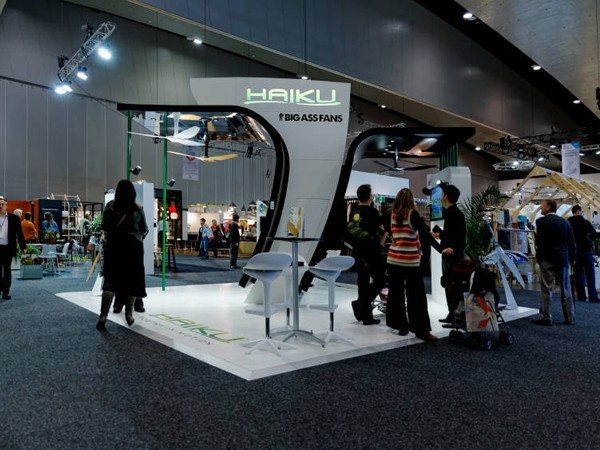Smaller and less formal than previous Designex
exhibitions, this year’s event made the most of its temporary home in Sydney, becoming an
island excursion within city lights and container ships, the beautiful and the
gritty.
The show itself was friendly, blessed with good coffee and such a
plethora of arrows determinedly pointing to this section and that, that I just
followed my usual routine of meandering up and down aisles stopping at things
that caught my eye.
The show was a wholesome melange of flat-pack,
disposable, recyclable and salvageable products and materials. Even the white
lampshades with colourful borders at Kezu’s best stand design were made from
French parachute material, said Mary Todd from marketing. Using many of the
store’s product lines the display well reflected Todd’s message, “if we’re
going to do it, we want to do it properly”.

I, meanwhile, had cut it fine, squeezing in on the Friday
afternoon but the end of week blur still left me with a feeling that the
exhibition exuded goodwill. It was low-key, boutique, power-saving where
possible, materials-driven for texture, shape, knarled, folded, serviceable,
calming, natural and organic, with an uncluttered, lightness. Think blonde and
light brown, such as the Moso bamboo Haiku fan, a much smaller, delicate
aerofoil fan from Big Ass Fans, shaped and hand-finished by US furniture makers
and with a Whoosh breeze-like setting.There was clever plywood shelving from Workshop in
Queensland. Scandinavian Wallpaper Décor’s digital wallpapers showed a battered
wall, striped timber, exposed brick work. Massey uses ply, soy resin, no glue,
flat-pack furniture and buys back material. Tongue and Groove’s own favourite
flooring (said director Richard Karsay) was their weathered and wash grey
floorboard. The Other Yellow Goat (what happened to the first one?) is
expanding from lighting to outdoor furniture in high pressure laminate with
optical illusion stripes emerging from production methods.
The Nest choices included salvaged Oregon lampshades;
accessories, lighting and furniture from Design By Them, in recycled plastic,
FSC certified timber, robust, clean, geometric; and an against-trend, striking
folded aluminium light in anodised gold from furniture and interior designer
Arthur Koutoulas, who, as the program said, is “never one to be easily
categorised”.
The buzz words were there in the program, passion, future
generations, creative collaboration, connectivity of technology and communities
(as in the future workplace, Workopolis), and there was a celebration of
Australian and New Zealand design that had been to the Milan show and back.
Let’s see how the rest of the year unfolds.
Deborah Singerman is a Sydney-based journalist and editor, specialising in architecture and design, including city, community, society, economy, sustainability and culture.

